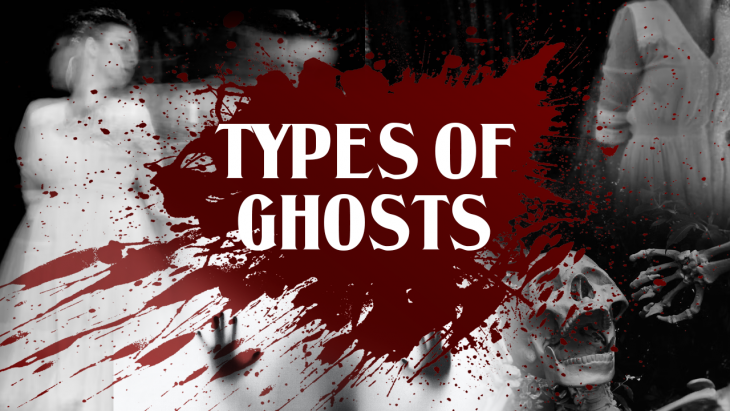
Every country in the world has its own types of ghosts. You could even call it a shared cultural trait between people no matter where they come from. They vary in different ways, with some cultures having very similar types of ghosts between them. Others, though, make up completely different beings. Here are 30 different types of ghosts from around the world to learn about today.
Bhoot
Also called bhuta, bhoot is a type of ghost originally from Indian culture, and analogous to traditional Western ghosts. Specifically, the lingering spirit of a dead person, kept in the world of the living thanks to one reason or another. In the case of the bhoot, the reason for their continued presence varies from region to region, as well as the story. Common reasons include the nature of their deaths, lingering regrets, or even the failure of the living to perform the traditional funerary rites.
A bhoot usually has the appearance they were living, although they usually possess the ability to take animal form. That said, regardless of their appearance, a bhoot’s feet always face backward, which tends to give their nature away. They also cast no shadows and will avoid entering sacred places at all costs. They may also sometimes dress entirely in white and speak with nasal voices.
Doppelgänger

A type of ghost from Northern Europe, doppelgängers supposedly mirror the appearance of a person. People who encounter their doppelgängers tend to suffer from very bad luck, usually ending in death. While commonly associated with German folklore, doppelgängers actually feature in cultures worldwide. Irish folklore, for example, has a similar type of ghost called a “fetch” instead.
Philippine folklore even has ways with which a person can cast off the bad luck a doppelgänger brings. These include immediately taking off your clothes, turning them inside out, and then putting them back on. Another way involves immediately going home and taking a bath to wash off the bad luck. A person who sees another person’s doppelgänger can also cast off bad luck by simply slapping the real person in the face.
That said, not all doppelgängers bring bad luck. Ancient Egyptians, for example, believed everyone had a spirit double, a ka which carried on a person’s memories and emotions to the afterlife.
Dybbuk
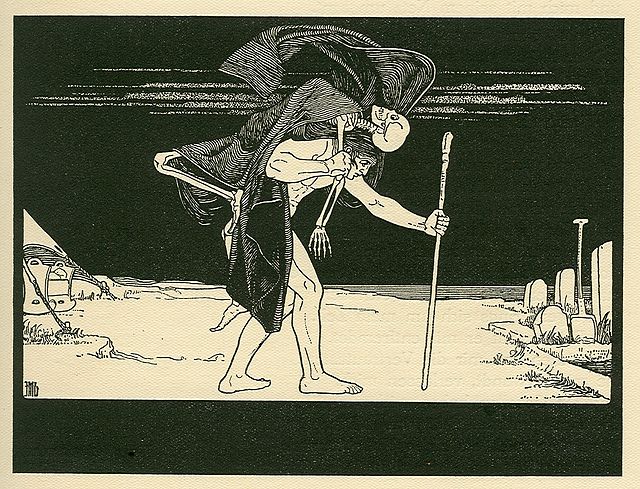
A type of ghost from Jewish folklore, it typically involves the soul of a dead person which remains in the world over past regrets. Dybbuks try to possess the living to try and act on those regrets, which actually make them somewhat morally ambiguous. Some dybbuks become outright malevolent, possessing people to gain revenge for past slights.
Other dybbuks have benevolent goals, with some Jewish mystics even allowing themselves to become possessed by them. These ghosts typically do not have a specific religious rite performed to allow them to pass on. That said, all dybbuks tend to pass on once they achieve their goals, regardless of intent. However, as their intent may not always have positive results, Jews have their exorcism rituals to get rid of malevolent dybbuks.
Ghost Ship
Also known as phantom ships, this type of ghost typically features an unreal vessel that may or may not have a crew of its own. They typically appear in bad weather and are usually associated with bad luck. The most infamous example of this type of ghost involves the ghost ship known as the Flying Dutchman.
According to the legend, the Flying Dutchman met its fate while sailing past the Cape of Good Hope during a storm. The ship’s crew repeatedly asked the captain to head for the nearest port, but he refused. He also swore an oath to sail the seas forever if he could not beat the storm without having to take shelter in a port. This, in turn, led to the ship’s curse, with anyone who ever saw the vessel suffering from bad luck.
One story from 1881 even has then-Prince George, later King George V, sighting the Flying Dutchman off of Australia. On the same night after the sighting, the ship’s watchman fell from his post atop the ship’s mast and died on impact with the ship’s deck.
Gjenganger
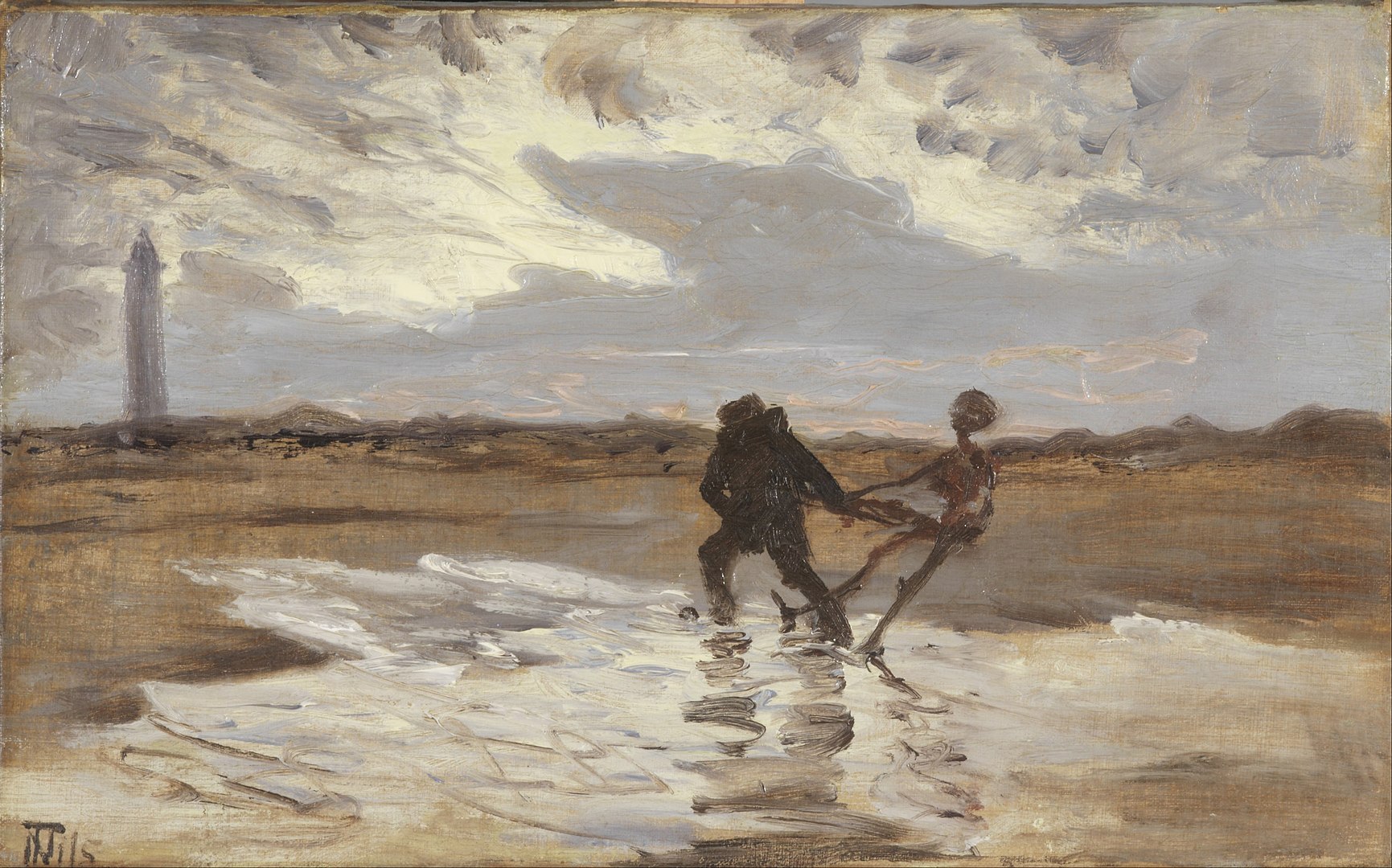
A type of ghost from Scandinavia, it describes the restless spirit of a dead person who seeks to drag more people into the grave with it. The reasons for their restlessness vary. Most gjengangere involve the spirits of either the murderer or their victims. Other gjengangere involve people who died with deep and lifelong regrets.
Unlike other types of ghosts, gjengangere appear completely lifelike, with nothing giving away their supernatural natures. This makes them very dangerous, as there’s no way to tell them apart from the living. In fact, Scandinavian folklore focuses less on appeasing gjengangere, as much on keeping the dead from becoming one. Typically, people buried according to Christian funerary rites don’t come back as gjengangere.
Otherwise, Scandinavians tended to pile stones and twigs into funerary monuments called varps in places where people died unusual deaths. Passersby would then toss twigs on a varp whenever they encountered one, which appeased the dead. Failing to do so risked causing a gjenganger to go after them afterward.
Ifrit
Also known as efreet, afrit, and afreet, this type of ghost comes from Islamic mythology. They also have an ambiguous nature, with some sources sometimes describing them as demons from hell, while others describe them as restless spirits of the dead. Either way, they’re described as having malicious characters, with bodies formed from fire and smoke.
That said, they’re also sometimes described as able to carry out God’s will, usually by avenging past wrongs. Islamic folklore also mentions that the ifrit isn’t fundamentally evil, and may even turn to a noble purpose. One story from Northern Iraq, for example, has Muhammad deliver an imprisoned ifrit to his cousin, Ali. Ali eventually releases the ifrit, on the condition that the ifrit submits to the will of God.
Jiangshi
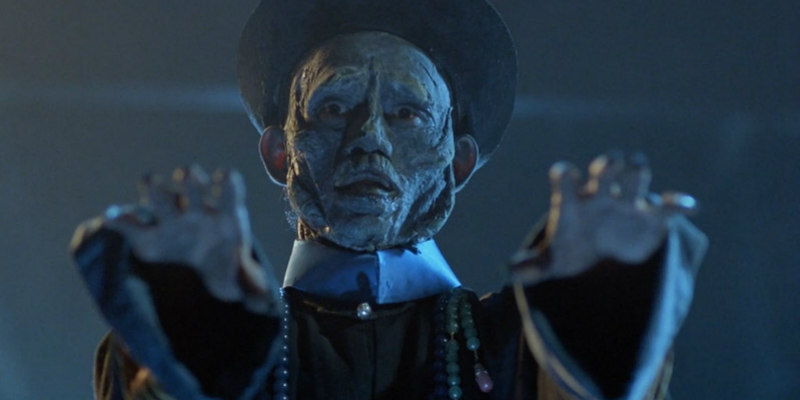
Also known as the Chinese version of the vampire, they’ve become popularized worldwide thanks to Hong Kong movies since the late 20th century. In particular, they appear as reanimated corpses that hop around and attack people. They may also have greenish skin, from how their dead bodies have already begun to rot. Unlike Western vampires, jiangshi do not drink blood, and instead drain their victim’s qi, or life force, by touch.
Traditionally, jiangshi forms when a dead person’s soul becomes trapped in its body. As such, exorcizing the jiangshi typically involves simply destroying its body, usually with fire. This, in turn, frees the spirit to move on to the afterlife.
Krahang
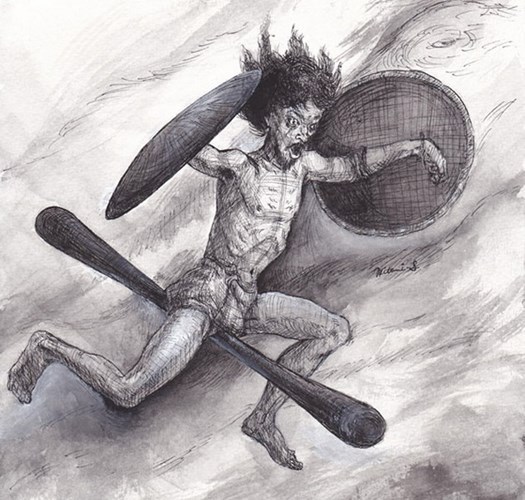
A type of ghost from Thailand, the male krahang forms a pair with the female krasue. The krahang typically appears as a shirtless man flying around at night on a pair of rice baskets. It does so to find people walking alone, which the krahang then attacks. In the daytime, though, the krahang passes itself off as just another ordinary person.
The krahang’s legend roots itself in traditional oral Thai folklore. However, scholars note that it has a modern name. The legend has also become repeatedly used in Thai media in recent years. For instance, in 2012, after a series of attacks on women at night in rural areas in Northern Thailand, locals blamed a krahang. It wasn’t until later that authorities caught the suspect, a drug addict living in the area. Similarly, in 2017, supposed sightings of a krahang took place in Northern Thailand. This led a local elder to hold traditional exorcism rites, which supposedly failed to drive away the krahang.
Krasue
The krasue makes up the female pairing of the krahan, but has a much more malevolent nature in comparison. For one thing, the krasue has a much more monstrous appearance, that of a woman’s head with all her internal organs from the neck down trailing under it.
Thai folklore claims that being krasue is a form of punishment after death for women who lived sinful lives. They suffer from perpetual hunger, which causes the ghost to go looking for cattle or poultry at night to eat. If it fails to find either cattle or poultry, the krasue will eat feces instead.
In the daytime, the krasue passes itself off as just another woman, before turning back into a monster at night. It does so by tearing its head off and its organs out of its body, which it then hides away. A krasue must return to its body before sunrise, or it will die in agony. Similarly, if the body gets found and burned, the krasue will die even before sunrise.
Lady in Red
Also known as a Red Lady, this type of ghost manifests as the restless spirit of a scorned woman, or even that of a murdered prostitute. Compared to other ghosts, most red ladies tend to be friendly even if they haunt historic hotels, theaters, and similar places. They may also appear vain, often showing off to the living in the hopes of earning praise and capturing their attention. Their appearance reflects this, that of beautiful women in red dresses.
That said, some red ladies have darker reputations, although they still tend to avoid harming the living. For instance, a red lady haunting the First Ontario Concert Hall in Ontario, Canada, goes around crying blood. Similarly, a red lady haunting Leap Castle in Ireland goes around carrying a dagger.
La Llorona
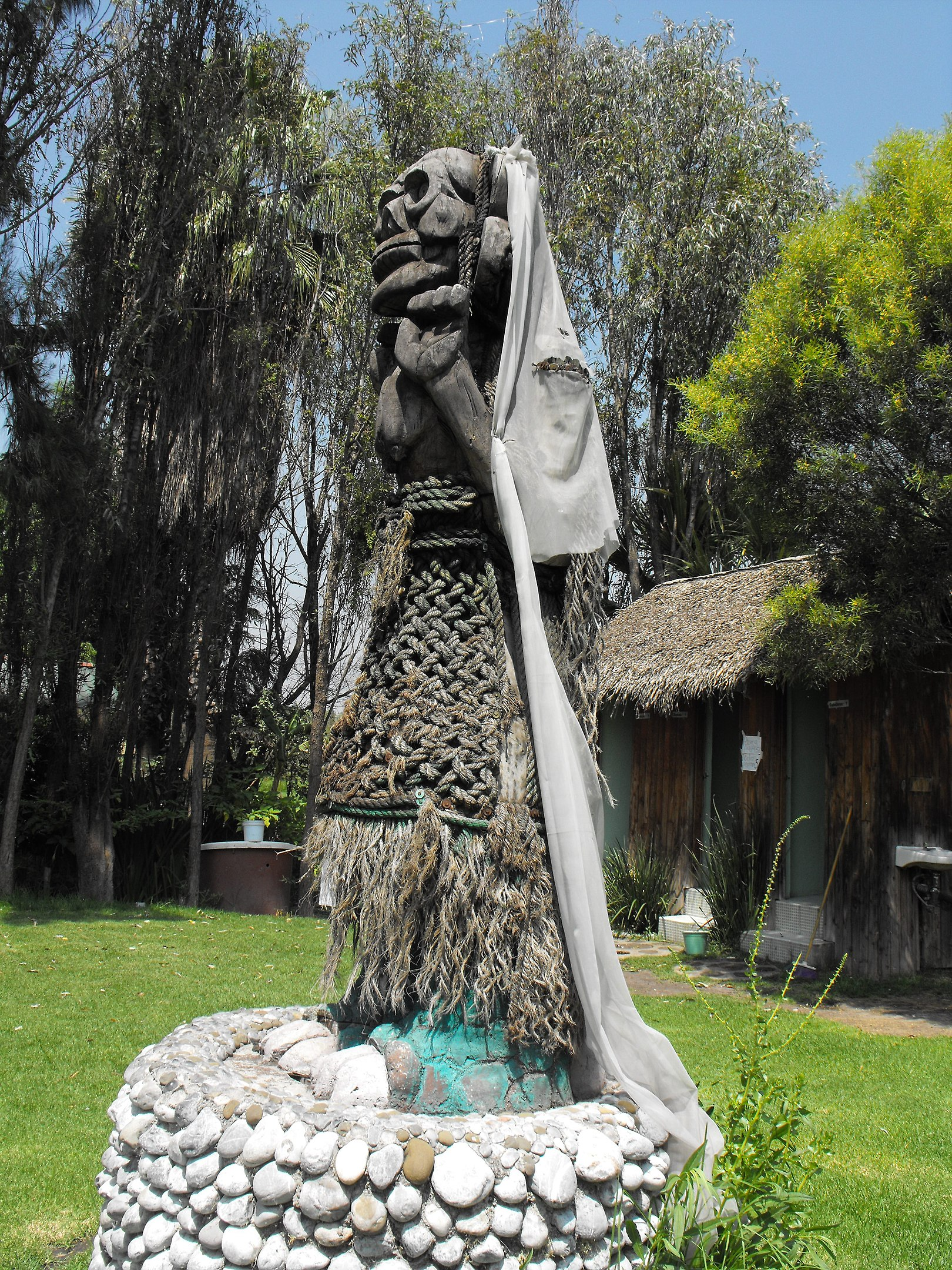
One of the most famous types of ghosts in the world, La Llorona has its roots in Mexican folklore. The story traditionally goes that a woman marries a rich man and has two children with him. One day, however, she spots him with another woman and angrily responds by drowning her children. She then realizes what she’s done, and regretfully proceeds to drown herself in her turn. As punishment for killing her children, though, she’s denied entry to the afterlife, and cursed to wander the Earth vainly looking for her children.
While the modern form of La Llorona forms a part of Mexico’s post-colonial culture, scholars have noted similar oral traditions predating the Spanish conquest. In particular, they point to one legend, which claims a ghostly woman wandered the streets of Tenochtitlan just before the Spanish Conquest. Supposedly, she wept while saying “My children, we are about to go.”, supposedly foreshadowing the bloody end of the Aztec Empire. Other scholars have also hypothesized La Llorona as a symbolic form of criticism against La Malinche, a native woman who helped Cortes conquer Mexico.
Mae Nak
Also known as Mae Nak Phra Khanong, as well as Nang Nak, it’s a female type of ghost from Thailand. The legend behind the ghost supposedly took place in the late 19th century, during the reign of King Rama IV.
According to the legend, a man named Mak once married a woman named Nak and got her pregnant. Before she could give birth, Mak joined the army and went off to fight in the Kengtung Wars against Burma. Nak gave birth in his absence but died along with her child before Mak could return. However, on his return, he found his wife and child waiting for him, with Mak only later realizing their nature as ghosts. Terrified, he fled to a temple, which Nak couldn’t enter. Nak responded by terrorizing the locals until an exorcist trapped her in a jar and threw it into the sea, However, Nak eventually escaped after a fisherman unknowingly pulled up the jar from the sea and opened it.
Today, a shrine stands in Bangkok in Mae Nak’s memory, in the hopes of appeasing the spirit and eventually allowing her to move on.
Manananggal
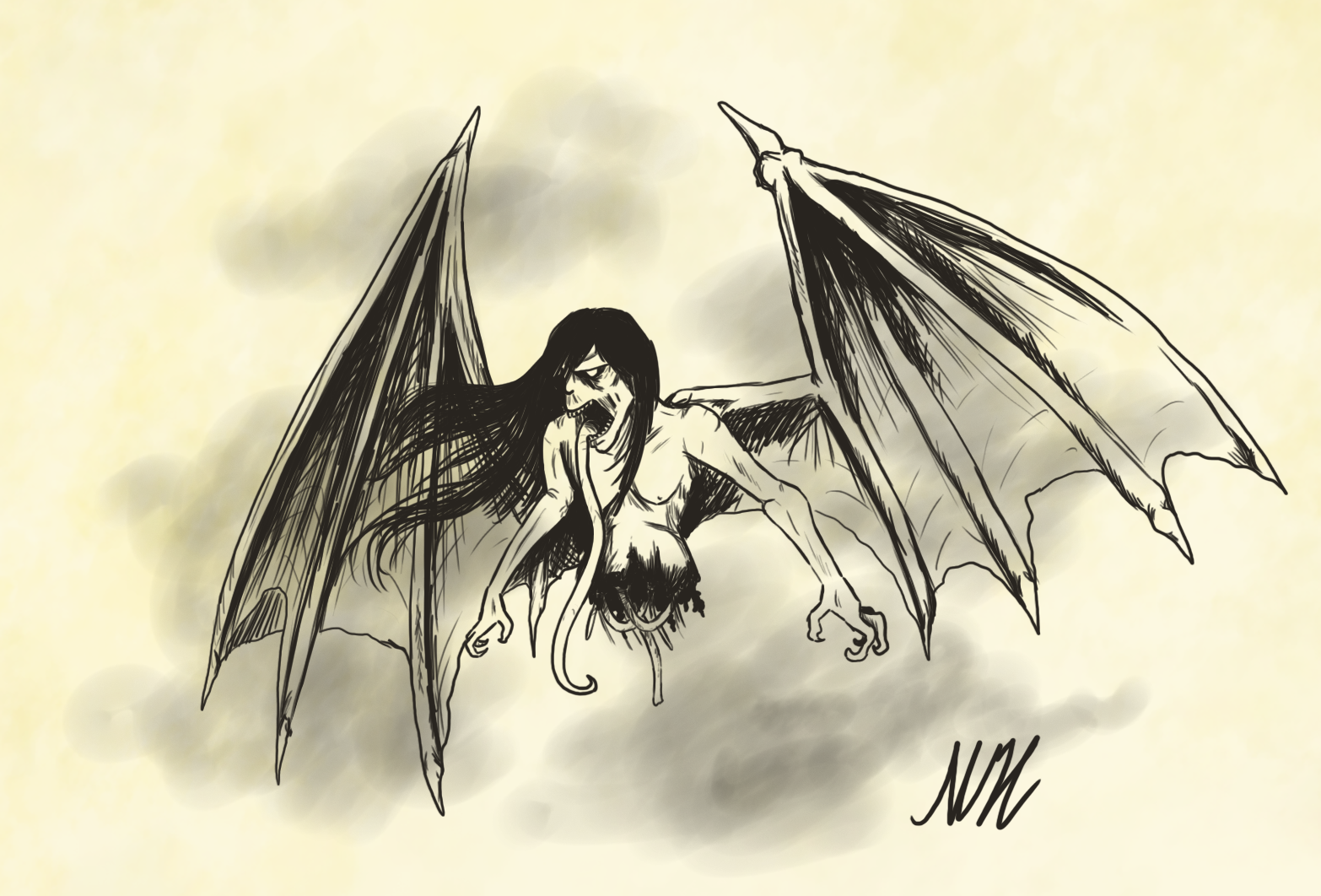
A type of creature from the Philippines, the mananaggal is also one of the most iconic figures in Philippine mythology. While not exactly a ghost, the manananggal has qualities that make it haunting. During the day, it takes the form of a woman, but at the night, separates her body from the waist up to fly using bat-like wings. The manananggal then heads out in search of pregnant women to eat the fetuses inside their billy. It does so using its long and fanged tongue. The fangs make a small incision into the woman’s belly, from which the manananggal sucks the fetus out.
The legend also claims that while the manananggal enjoys immunity from harm at night, its discarded lower body does not. Killing the manananggal involves placing salt and garlic on its waist. Without the means to return to its human form, the manananggal is left helpless when the Sun rises.
Nang Takian
Another type of ghost from Thailand, a Nang Takian haunts ta-khian trees and serves as its protector. Most people have nothing to fear from a Nang Takian, but it would be hostile if anyone defiles its tree. Similarly, people who live in houses made from ta-khian wood may also suffer bad luck or other supernatural phenomenon caused by a vengeful Nang Takian.
That said, they do make certain exceptions, such as in the case of Buddhist monks. Ta-khian wood commonly gets used to build Buddhist monasteries, which Nang Takian considers a worthy sacrifice. However, even Buddhist monks must follow certain rituals to appease any Nang Takian watching over ta-khian trees meant for use in their monasteries.
Nang Tani
Yet another type of ghost from Thailand, a Nang Tani has many similarities to a Nang Takian. In fact, the only difference between them involves the tree they watch over. The Nang Tani guards wild banana trees. This kind of banana tree produces inedible fruit, which helps keep people away.
That said, the leaves of wild banana trees have uses in traditional Thai medicine, as well as for wrapping traditional sweets. This results in various customs to appease a Nang Tani when harvesting the tree’s leaves. These customs usually include giving gifts such as flowers, incense, and even sweets to the ghost. Other customs also involve the wrapping of satin cloth around the trees.
Onryou
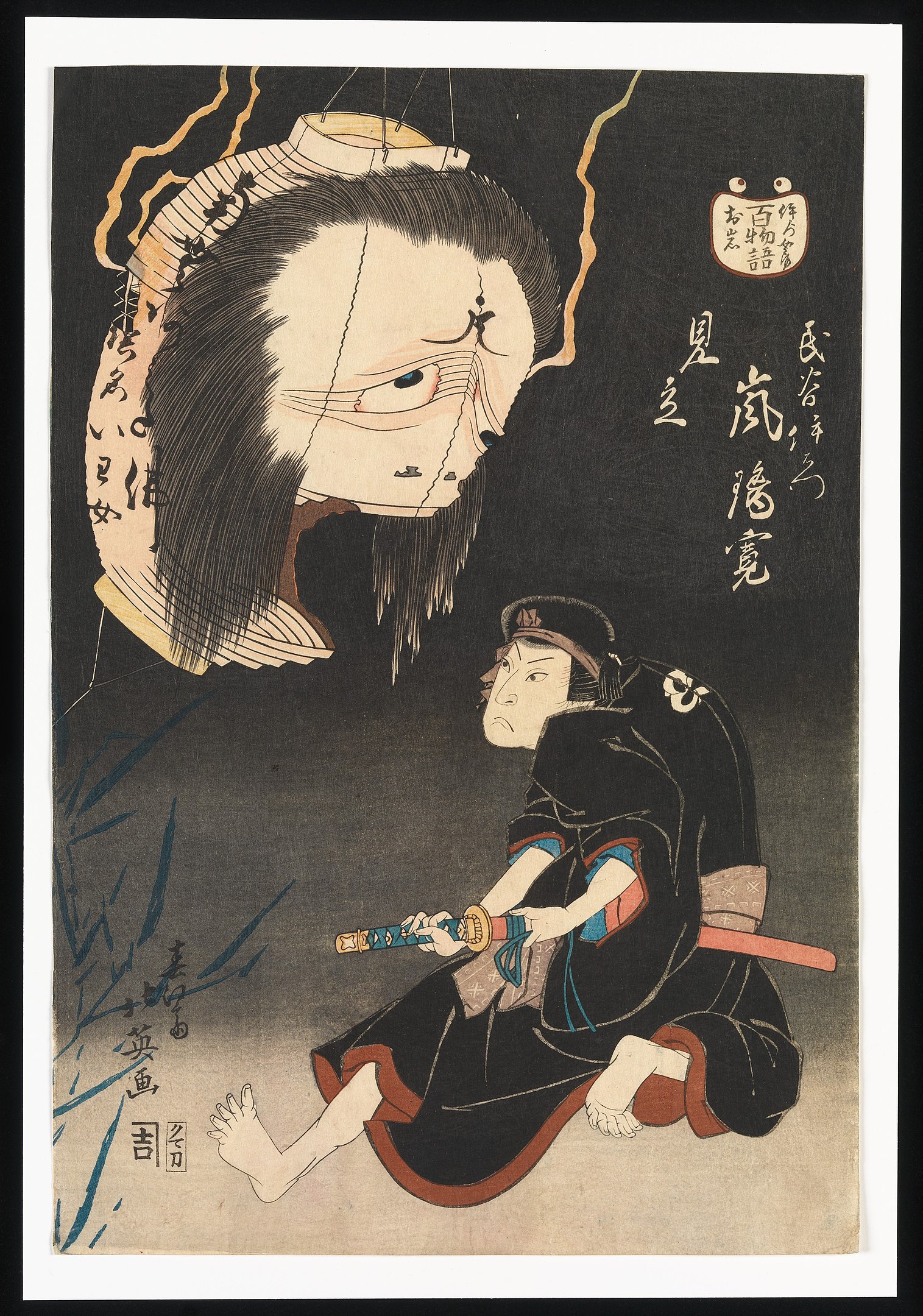
This is a type of ghost from Japan that is a spirit of a woman who died with extreme hate. They stay in the world of the living, to avenge past wrongs. However, they do so with extreme violence. Sadako Yamamura from The Ring franchise is one of the most iconic examples of this type of ghost in modern media. In particular, she has the onryou’s indiscriminate tendency to attack and kill anyone her curse falls on.
However, even Sadako’s power pales in comparison to those of rare male onryou, usually born of royal blood. One is Prince Sawara from the 8th or 9th centuries A.D., who bore a grudge against Emperor Kanmu. His grudge resulted in a series of natural disasters, such as droughts, earthquakes, and typhoons. It only ended when Emperor Kanmu posthumously shared the title of Emperor with his brother.
Even then, Emperor Kanmu took the additional precaution of moving the capital from Nagaoka to Kyoto. He did this in case his appeasement of Prince Sawara proved insufficient and resulted in more natural disasters.
Penanggalan
A type of ghost from Malaysia, it bears many similarities to ghosts from neighboring cultures. These include the krasue from Thailand, with the penanggalan actually having the same appearance. The penanggalan also has similarities with the manananggal from the Philippines, The penanggalan also hunts pregnant women to feed on their unborn children.
That said, the penanggalan does have distinct traits of its own. Unlike its Thai or Philippine counterparts, the penanggalan does not separate itself from its body at night. Instead, it simply transforms from its human body to its ghostly form. The penanggalan’s ghostly status is also ambiguous, at least in a Western context, as they aren’t wholly spiritual beings. This results from how penanggalan supposedly originated from witches gaining the ability to transform while submerged in vinegar.
Phi Am
A type of ghost from Thailand, a Phi Am has a reputation for sitting on people’s chests while they’re asleep. This allows them to simultaneously paralyze their victims and give them nightmares. The paralysis, in particular, keeps them from jolting awake or attracting the attention of someone who might help them.
This led the term to become adopted by the Thai medical community as a synonym for sleeping paralysis. Much like the ghost it shares its name with, sleeping paralysis typically involves nightmares so frightening the body cannot move from sheer terror. This can actually prove fatal, as the victim finds themselves unable to breathe.
Phi Phong
Also known as Phi Phao, it’s a type of ghost from Thailand, particularly in its northern provinces. Like many Thai ghosts, a Phi Phongcano pass itself off as an ordinary person during the day, before turning into its true ghostly self at night. A Phi Phong spends the night hunting for various kinds of food, such as frogs and fish. It may also eat dead bodies, feces, and even discarded placentas.
This type of ghost typically avoids people but will avenge itself against people that bother it. This typically involves the Phi Phong throwing banana stalks against their house, which causes them to suffer from bad luck. That said, a Phi Phong has a surprising weakness: a person recognizing and calling it a ghost while in human form. However, a Phi Phong can also turn other people into more of its kind by simply spitting on them.
Phi Pop
Commonly called simply Pop, this is a type of female ghost with a cannibalistic reputation in Thailand. According to legend, this type of ghost came to be when a prince in ancient times used magic to transfer his soul to an animal. A servant copied the prince to steal his body, only for the prince to warn his wife of their servant’s betrayal. The princess then destroyed the servant’s body, while the prince tricked the servant into leaving his body. Left bodiless, the servant’s spirit fled, turning into a cannibalistic monster that consumes intestines to survive. Eventually, it found a new host in a witch’s body, with Phi Pop leaving every night to feed.
This type of ghost caught media attention in 2007 when over 1,000 people in Northern Thailand had two women exorcized as supposed hosts to Phi Pop. In 2012, 10 of those people suddenly died in what their neighbors described as retribution from the ghost.
Phi Tai Hong
Another type of ghost from Thailand, a Phi Tai Hong refers to the restless and vengeful spirit of a person who died a violent death. This leads them to violently lash out against any of the living they encounter, seeking to ease their own suffering with the suffering and death of others. With this belief, people in Thailand avoid places where someone died violently for at least a week after their death. This supposedly gives the souls of the dead time to calm down and possibly move on.
Thai folklore also mentions a variant of Phi Tai Hong called Tai Thong Klom. The latter results when a woman and her child both die in labor. This variant of the ghost tends to have a more violent and even more powerful curse, thanks to resulting from multiple deaths. In a surprising twist, however, one legend of the Thai Thong Klom has the Dutch East India Company deliberately sacrificing pregnant women while building their fortresses in the region. Since the women died for a constructive purpose, their spirits lingered not as vengeful ghosts, but as protective ones instead.
Pontianak
Also known as Kuntilanak, this is a type of ghost shared by Indonesian, Malaysian, and Singaporean cultures. It results from a woman dying in labor along with her child, with the ghost taking after her appearance. The nature of its death drives the ghost mad, with the spirit using its appearance to lure men to their deaths, typically by eating their innards.
This type of ghost also shares its name with the city of Pontianak in Indonesia, largely because of them infesting the city’s site during its founding. However, the first Sultan of Pontianak, Syarif Abdurrahman Alkadrie, fought and banished all the ghosts.
That said, some parts of the city remain supposedly haunted by the ghosts. With that, the city has a custom of having log cannons firing volleys at regular intervals. The volleys serve as a form of salute in honor of the sultan’s memory and as a way of trying to frighten the ghosts away.
Preta

Translated into English as “hungry ghost”, it’s a kind of ghost common to all South and East Asian cultures. This results from its roots in Buddhist and Hindu theology, with pretas referring to souls trapped between death and reincarnation in a new life. In particular, this results from the failure of the living to perform proper funerary rites for the dead. If the rites do not get performed within a year of the person’s death, their soul remains a preta for eternity.
That said, other conditions exist for a person’s soul to become a preta after their death. Usually, only greedy and deceitful people become pretas after they die, which actually reflects their karma. Traditionally, this drives them to devour either corpses or feces, but modern sources have pretas hungering for other things as well. Either way, this serves as the origin for their name, which means hungry ghost.
Revenant
A type of ghost common to European folklore, revenants generally refer to reanimated corpses. However, they differ depending on the folklore of the various European countries. In Scandinavia, for example, revenants have protective characteristics such as defending burial grounds from tomb robbers.
In Medieval England, various folk stories describe revenants rising from their graves for various reasons. For example, one revenant rose to seek revenge for his wife’s infidelity, with the haunting only ending after the locals dug up his body during the day and burned it. In another story, another revenant arose out of its unwillingness to leave its wife behind. The revenant only rested in peace after a bishop wrote an absolution for his sins, which they placed in the revenant’s tomb.
Shade
One of the oldest types of ghosts in the world goes as far back as Biblical times, with shades first mentioned in the Old Testament’s Book of Samuel. Scholars have identified the term’s origin with widespread beliefs in the Ancient Near East over the fates of the dead. In particular, it ties with the common belief of an underworld where the dead live in the underworld under a perpetual shadow.
This was later passed on to Ancient Greece, where it became reinterpreted as seen in the myth of Orpheus. In the myth, Orpheus descends to the underworld looking for his dead wife. There, he finds the dead reduced to intangible shadows, or literal shades, of their living selves. This later became the origin of the common Western perception of ghosts having the translucent and intangible appearances of when they still lived.
Strigoi
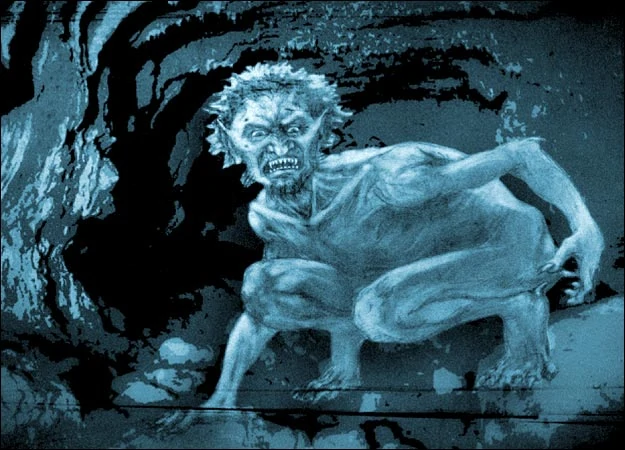
A type of ghost from Romanian folklore, strigoi makes up one of the source materials for the modern vampire. In particular, strigoi refer to reanimated corpses that seek to drink the blood of the living, which they need to avoid permanently dying. However, as they’ve already died, their bodies rot regardless of their reanimated state. This gives strigoi a monstrous appearance, that of literal walking corpses. However, they supposedly have shapeshifting abilities and could even turn out outright invisible to mask their monstrous appearances.
Romanian folklore also gives various reasons behind how a dead person can become a strigoi. These include living a sinful life, getting cursed by a witch, getting executed for perjury, or committing suicide. One bizarre reason even involves getting born as the seventh child of the same sex from the same parents. The strigoi myth also provides the origin of one of the most common ways to kill a vampire. Specifically, driving a stake through the heart.
Tiyanak
A type of vampiric creature from the Philippines that haunts people, the tiyanak has two origin stories, depending on the historical context. Legends from before the colonial period claim that the tiyanak are unborn children whose mothers died before they could give birth. However, stories from the colonial period onward instead claim that the tiyanak is the souls of children who died before getting baptized.
Regardless of the origin, stories of the tiyanak have the ghosts mimic the crying of a child to lure the unwary into the jungle. The stories also always describe the tiyanak as generally having child-like features. They also have claws and fangs which they use to kill their victims.
That said, the stories also tell of various ways to deal with the ghosts. One involves the victim taking off their clothes, pulling them inside-out, and putting them back on. This amuses the tiyanak, which then proceeds to let the victim go. Rosaries and other holy objects also repel the tiyanak, as does garlic. Baptismal rites also supposedly affect the tiyanak, curing them of their restless states and guiding them to the afterlife.
Vampir
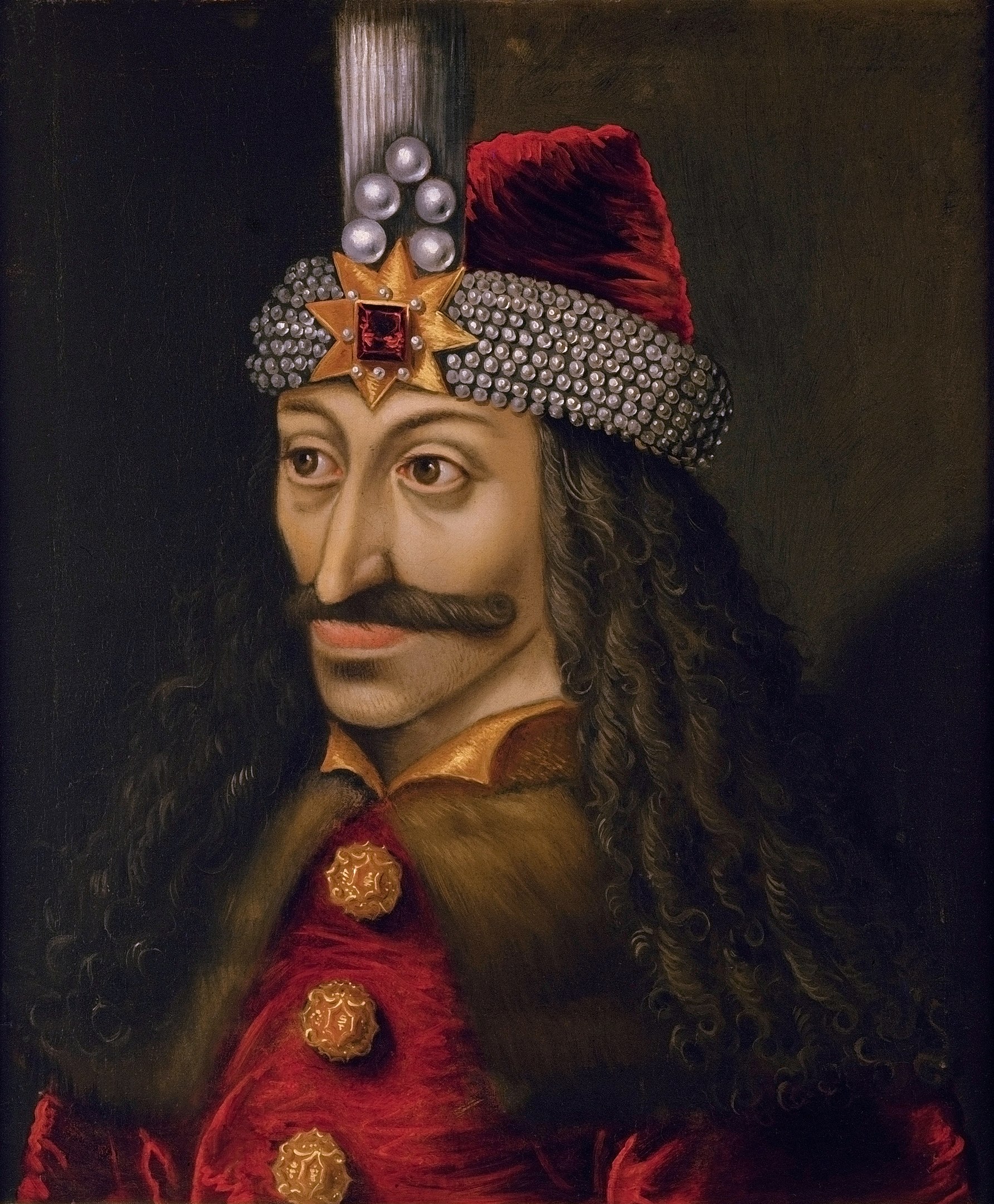
The main origin of the modern vampire, this type of creature with a ghostly appearance has its origins in Slavic culture. In fact, all Slavic countries have their own versions of the vampir, from Serbia in the south to Russia in the north, and from Poland in the west to Ukraine in the east. Like the Romanian strigoi, vampir are reanimated corpses that seek to drink the blood of the living. They need to do so to avoid permanently dying, but unlike the strigoi, the bodies of vampir do not rot, allowing them to pass for the living more easily.
That said, their bodies do reflect their unnatural nature, such as pale, sickly skin, and having no heartbeat. They may also possess magical powers, reflecting the widespread belief that witches and heretics become vampir after they die. To prevent this from happening, people in Slavic countries traditionally beheaded the corpses of those convicted or suspected of witchcraft and heresy in life.
This tradition later became shared by neighboring Germany, which served to transmit the vampir tradition to Western Europe. There, it became famous as the vampire, in particular, through Bram Stoker’s novel Dracula. Ironically, while known for his cruelty and bloodlust, Dracula’s inspiration, Vlad Tepes III of Wallachia, had no historical association with the vampir.
Vrykolakas
A type of ghost from Greece, the vrykolakas shares many similarities with the vampir. People who died excommunicated by the Church could become vrykolakas after they die, as do those who get buried in unconsecrated ground. Sinners, in general, could become vrykolakas, along with people who eat meat tainted by a wolf or a werewolf. Werewolves may also become vrykolakas after getting killed unless their bodies get burned immediately afterward. A vrykolakas’ body doesn’t rot, instead mutating into large, drum-bodied, red-skinned monsters.
Unlike the vampir, the vrykolakas does not drink blood. Instead, they tear out and eat the liver, along with other internal organs. They may also spread plagues with them wherever they go, and only grow stronger the older they get. This makes killing them and destroying their bodies very important for any community supposedly haunted by them.
White Lady
Also called a Lady in White, this type of ghost has many similarities with the Lady in Red. For one thing, they’re famous worldwide, with many sightings in countries and cultures all over the globe. For another thing, they also share similar origins, that of women who died violent and untimely deaths.
That said, they also have differences. Most obviously, a Lady in White dresses in white. Also, unlike a Lady in Red, a Lady in White is typically hostile. In fact, a Lady in White will actively try to drive their victims into tragedy, usually destroying their lives before they die. Some versions of the White Lady, like the Russian zayan, even bewitch men with their beauty before literally dragging them beneath the Earth.
Was this page helpful?
Our commitment to delivering trustworthy and engaging content is at the heart of what we do. Each fact on our site is contributed by real users like you, bringing a wealth of diverse insights and information. To ensure the highest standards of accuracy and reliability, our dedicated editors meticulously review each submission. This process guarantees that the facts we share are not only fascinating but also credible. Trust in our commitment to quality and authenticity as you explore and learn with us.
